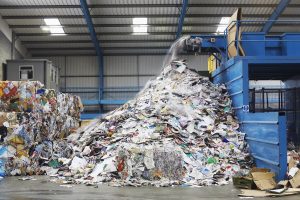Skip Bin Guidelines for Materials: What You Need to Know
Skip bins offer a convenient way to dispose of a variety of materials, making them a popular choice for residential, commercial, and construction projects. However, proper use of skip bins requires understanding what materials are acceptable and how to handle them appropriately. This guide provides essential skip bin guidelines to help you manage waste effectively and avoid common pitfalls.
Understanding Skip Bin Regulations
Skip bins are governed by regulations designed to ensure safe and efficient waste management. These regulations can vary by location and provider, so it’s important to familiarize yourself with local guidelines. Generally, skip bin regulations address:
- Types of materials that can be disposed of
- Weight limits and bin capacities
- Handling of hazardous and special waste
- Proper loading practices
Always consult with your skip bin provider or local waste management authority to ensure compliance with specific rules in your area.
Accepted Materials for Skip Bins
Most skip bins can handle a range of materials. Here’s a breakdown of commonly accepted materials:
1. General Household Waste
Household waste typically includes:
- Packaging materials
- Food scraps (if allowed)
- Old furniture and appliances
- Clothing and textiles
- Books, magazines, and paper products
Ensure that household waste is clean and free from hazardous substances to prevent contamination of the skip bin contents.
2. Construction and Renovation Waste
For construction and renovation projects, you can dispose of:
- Bricks and concrete
- Wood and timber
- Plasterboard and drywall
- Tiling and flooring materials
- Metal scraps and fittings
Some skip bin services offer specialized bins for construction waste, so check with your provider to select the appropriate bin type.
3. Garden Waste
Garden waste typically includes:
- Grass clippings
- Leaves and branches
- Small tree prunings
- Plant and flower cuttings
Garden waste should be placed in designated green waste bins if your skip bin provider offers them. This helps with composting and recycling efforts.
Materials Requiring Special Disposal
Some materials cannot be disposed of in regular skip bins due to safety and environmental concerns. These materials include:
1. Hazardous Waste
Hazardous waste includes substances that can pose risks to health or the environment. Examples are:
- Paints and solvents
- Batteries
- Asbestos
- Medical waste
- Flammable and corrosive substances
Hazardous waste requires special handling and should be disposed of through designated facilities or services. Contact your local waste management authority for guidance on safe disposal methods.
2. Electronic Waste (E-Waste)
E-waste includes:
- Old computers and laptops
- Televisions and monitors
- Home appliances like refrigerators and microwaves
- Mobile phones and other electronic devices
E-waste often contains materials that can be harmful if not disposed of properly. Many communities have e-waste recycling programs or drop-off centers for these items.
3. Large or Heavy Items
Large and heavy items may require special handling. Examples are:
- Mattresses
- Large furniture pieces
- Vehicle parts
Check with your skip bin provider for options, as some companies offer specific bins or services for large and heavy waste items.
Best Practices for Using Skip Bins
To maximize the efficiency of your skip bin and avoid extra charges or complications, follow these best practices:
1. Adhere to Weight Limits
Each skip bin has a weight limit. Overloading the bin can lead to additional fees or the need for a second bin. Be mindful of the weight of the materials you are disposing of and avoid exceeding the bin’s capacity.
2. Sort and Separate Waste
Sorting waste into categories such as general waste, recyclables, and garden waste helps in managing disposal more effectively. Some skip bin services may require waste to be sorted into different bins, so check with your provider for specific requirements.
3. Avoid Overfilling the Bin
Ensure that the waste does not extend beyond the top of the skip bin. Overfilling can cause safety hazards during transport and result in additional charges. Pack the waste evenly and avoid stacking items too high.
4. Follow Local Regulations
Local regulations may have specific rules regarding what can be disposed of and how. Familiarize yourself with these regulations to ensure compliance and avoid fines or penalties.
Conclusion
Properly managing waste with skip bins involves understanding what materials can be disposed of, following regulations, and adhering to best practices. By familiarizing yourself with skip bin guidelines and making informed choices, you can ensure efficient waste management and contribute to a cleaner environment. For more specific information, always consult with your skip bin provider or local waste management authority.

Skip Bin Guidelines for Materials
